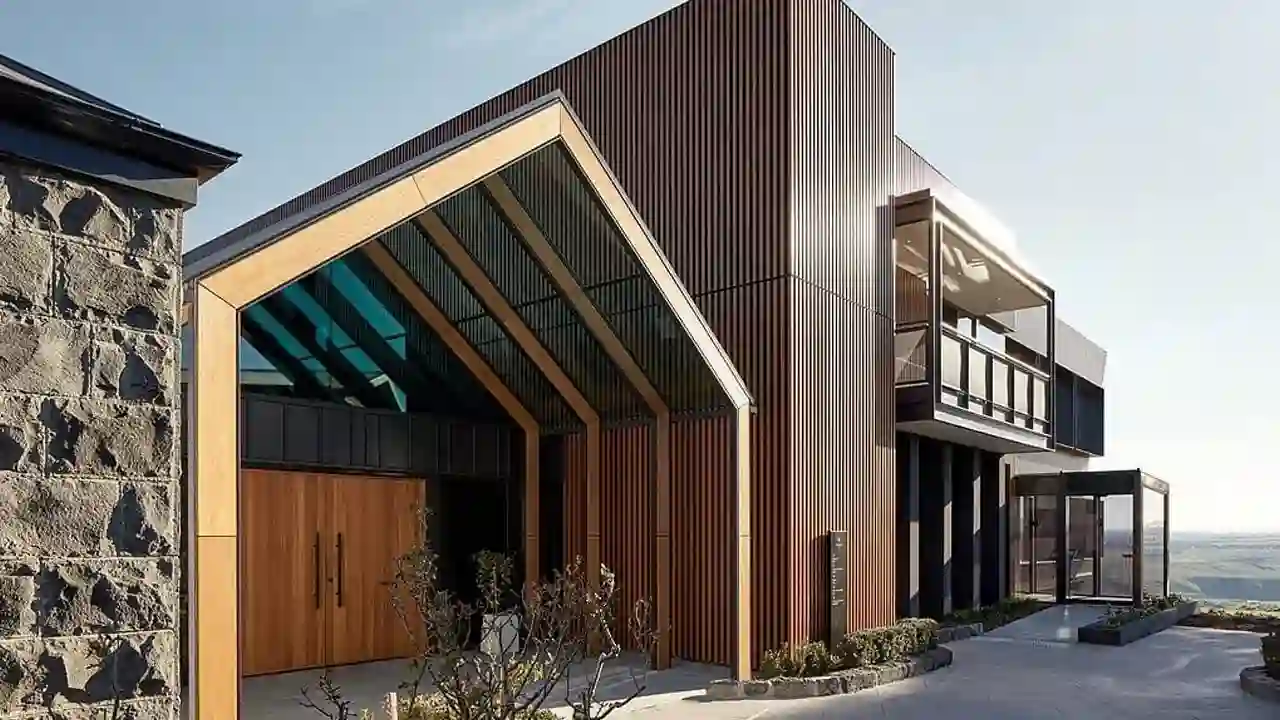01 Jun 2024

As the world becomes increasingly conscious of the impact of buildings on the environment, the demand for sustainable and eco-friendly construction materials has skyrocketed. In the realm of ACP cladding manufacturers and suppliers in UAE have responded to this growing demand by developing innovative and environmentally responsible solutions. This blog post explores the eco-friendly and sustainable ACP cladding options available, green building certifications and standards, environmental impact assessments, and case studies of sustainable ACP cladding projects.
Recycled Aluminum: Many ACP cladding manufacturers in UAE are now incorporating recycled aluminum in their products, reducing the environmental impact associated with mining and processing raw materials. Recycled aluminum not only conserves natural resources but also requires significantly less energy to produce compared to virgin aluminum.
Plant-Based Composites: Some ACP cladding suppliers have developed eco-friendly alternatives to traditional plastic cores by using plant-based composites or bio-based materials. These sustainable cores are derived from renewable sources, such as agricultural waste or plant fibers, offering a more environmentally responsible option.
Energy-Efficient Coatings: ACP cladding with specialized coatings can contribute to energy efficiency in buildings. Cool roof coatings, for example, reflect solar radiation, reducing the need for air conditioning and lowering overall energy consumption.
Recyclable and Reusable Panels: Many ACP cladding panels are designed to be easily recyclable or reusable at the end of their lifecycle, minimizing waste and promoting a circular economy approach in the construction industry.
As the demand for sustainable buildings grows, various green building certifications and standards have emerged to evaluate and recognize environmentally responsible construction practices. ACP cladding suppliers in UAE are adapting to these certifications by ensuring their products meet the necessary criteria:
LEED (Leadership in Energy and Environmental Design): LEED is a widely recognized green building certification program that evaluates buildings based on several criteria, including energy efficiency, water conservation, and material selection. ACP cladding products that contribute to these goals can help projects earn LEED certification.
BREEAM (Building Research Establishment Environmental Assessment Method): BREEAM is another internationally recognized sustainability assessment method for buildings, focusing on various aspects such as energy, health and well-being, materials, and waste management.
Estidama (Pearl Rating System): Developed in the UAE, the Estidama Pearl Rating System is a comprehensive green building code and rating system designed to promote sustainable development and construction practices in the region. ACP cladding work that meets Estidama's stringent requirements can contribute to achieving higher Pearl ratings for projects.
To fully understand the sustainability of ACP cladding, it is essential to consider its environmental impact throughout its lifecycle, from raw material extraction to manufacturing, installation, and end-of-life disposal or recycling.
Raw Material Extraction: The environmental impact of raw material extraction, such as aluminum mining and processing, should be considered. Manufacturers are increasingly adopting sustainable mining practices and sourcing materials from responsible suppliers.
Manufacturing Process: ACP cladding manufacturers in UAE are implementing energy-efficient and eco-friendly manufacturing processes, reducing their carbon footprint and minimizing waste generation.
Transportation and Installation: The transportation of ACP cladding panels to construction sites and their installation can contribute to the overall environmental impact. Choosing local suppliers and implementing efficient installation techniques can help mitigate these impacts.
End-of-Life Management: The recyclability and reusability of ACP cladding panels play a crucial role in their overall sustainability. Proper end-of-life management, such as recycling or repurposing, can minimize waste and reduce the demand for new raw materials.
Several architectural projects in the UAE have successfully incorporated sustainable ACP cladding solutions, showcasing the potential for eco-friendly and energy-efficient building designs. These case studies serve as inspiration and demonstrate the real-world applications of sustainable ACP cladding:
Masdar City: This pioneering sustainable urban development in Abu Dhabi features several buildings clad with ACP panels that incorporate recycled materials and energy-efficient coatings, contributing to the project's overall sustainability goals.
Dubai Design District (d3): The iconic d3 development in Dubai utilized ACP cladding solutions that met stringent sustainability standards, including the Estidama Pearl Rating System, showcasing the potential for sustainable design in the UAE.
Al Bahar Towers: Located in Abu Dhabi, these iconic towers feature an innovative ACP cladding system with a dynamic façade that responds to the sun's movement, providing natural shading and reducing energy consumption for cooling.
As the construction industry in the UAE continues to embrace sustainable practices, ACP cladding suppliers and manufacturers are at the forefront of developing eco-friendly and environmentally responsible solutions. By choosing sustainable ACP cladding options, adhering to green building certifications and standards, and considering the entire lifecycle impact, architects, developers, and building owners can create visually stunning and environmentally conscious structures that contribute to a more sustainable future.
Get inspired by innovative ACP cladding design trends and projects featured in "Transforming Architecture with ACP Cladding Trends and Innovations.